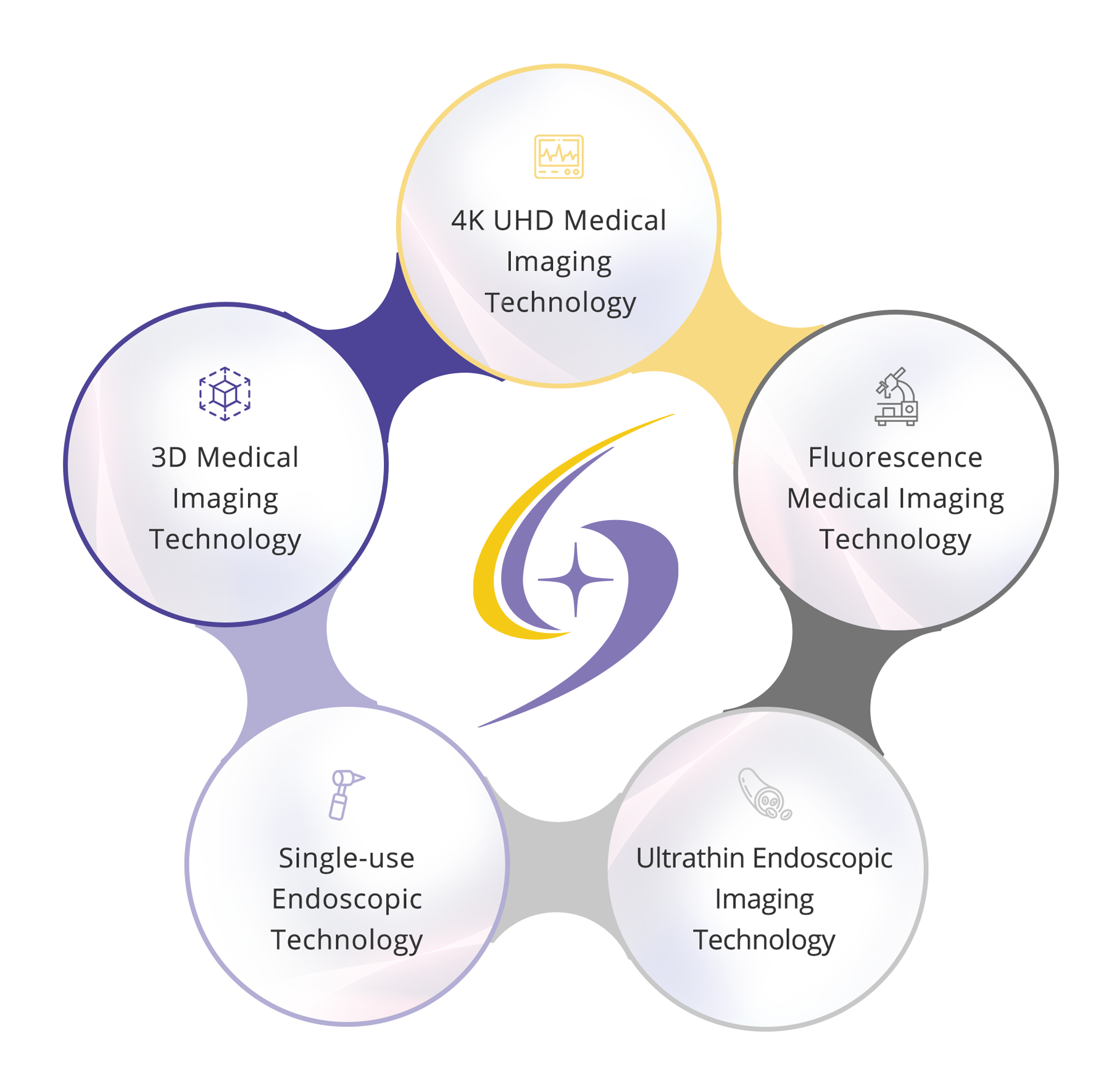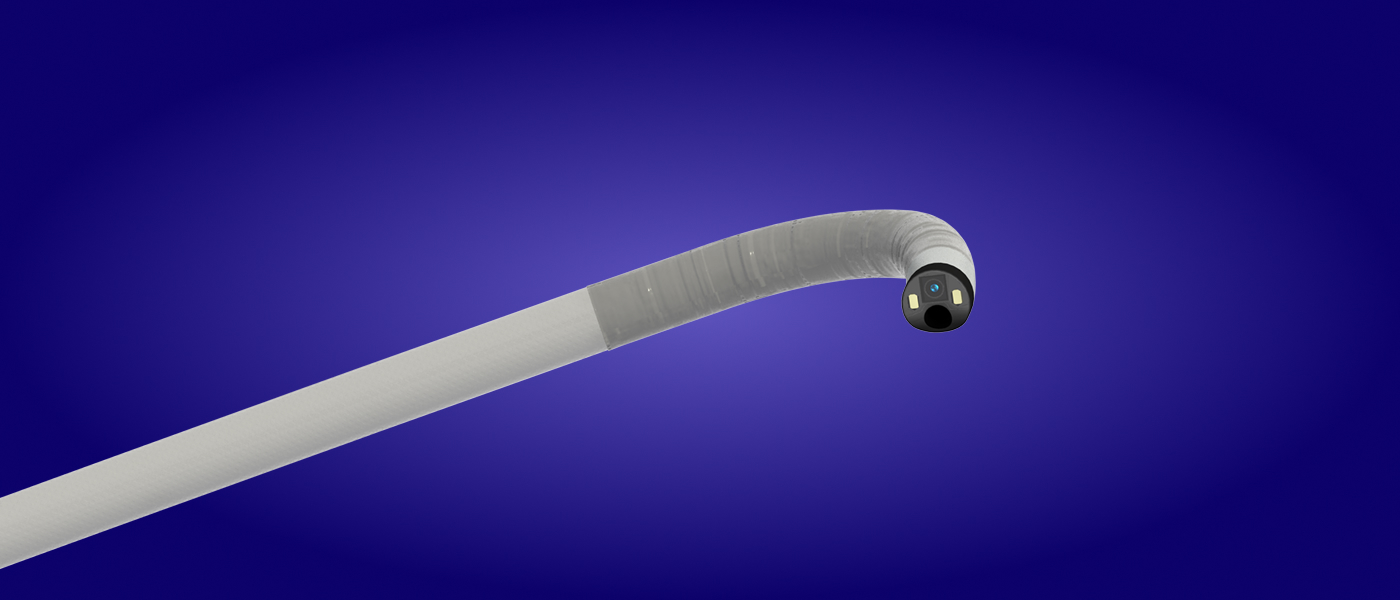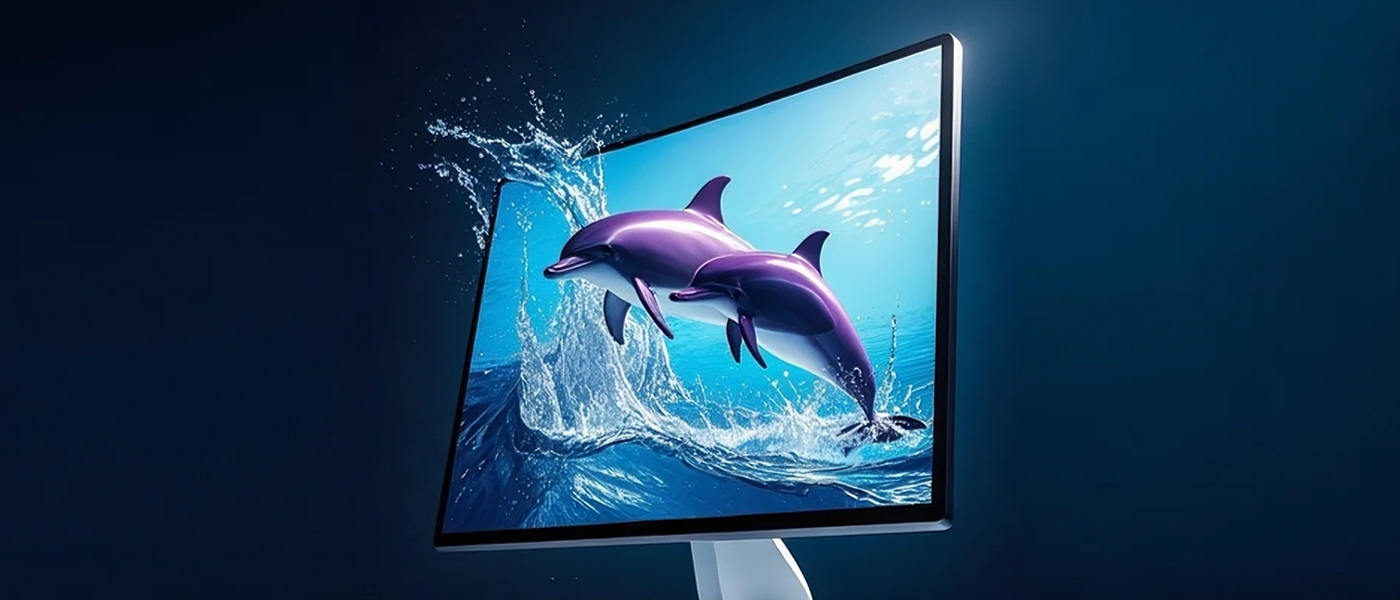Explore the powerful, flexible, and scalable platform
solving tomorrow’s challenges.
The five core technologies can create significant synergetic effects, allowing the Company to offer a wide suite of innovative endoscopic solutions to address the diversified clinical needs of different clinical departments / hospitals.



Our 4K UHD medical imaging technology is an industry favored technology which is expected to have broad clinical applications. It supports both 4K UHD (3840 x 2160) and Full 4K (4096 x 2160) resolution, providing approximately four times the resolution of Full HD (1920x1080) imaging systems. It generates a wide color gamut that is very close to the full range of colors perceivable by the human eye, thereby enabling rich color reproducibility.
View More
Compared to white light imaging technology that can only provide images of tissue surfaces, our fluorescence medical imaging technology provides fluorescence images below the tissue surface, such as cystic ducts, lymphatic vessels and blood vessels. Through the injection of exogenous dyes (fluorescent agents) or detection of the fluorescence emitted by the cells themselves, our fluorescence medical imaging technology enables physicians to clearly visualize and precisely identify lesions that are otherwise difficult to observe, thus realizing targeted and precise treatment and improving the safety of endoscopic diagnosis and treatment.
View More
Compared to conventional reusable endoscopes, our single-use videoscopes products and product candidates are designed to meet the growing demand of reducing the risks of cross-contamination and infection as well as corresponding hospital-acquired diseases, thereby enhancing patient safety. Their disposable nature frees physicians from having to sterilize the used endoscope after each procedure, thereby enabling rapid turnaround between procedures and improving diagnosis and treatment efficiency. In addition, our single-use videoscopes are highly cost-effective to be adopted in a broad range of clinical departments, and require no cost on reprocessing, maintenance and repair.
View More
Leveraging our ultrathin endoscopic imaging technology, we are able to develop endoscopes that are much thinner than the traditional endoscopes, without sacrificing image quality or visual effects. Our ultrathin endoscopes are able to inspect tissues and identify lesions in narrow apertures or crevices, making it possible for physicians to perform diagnostic and/or treatment procedures on tiny organs or body parts (e.g., the root canal of Teeth, the lacrimal gland or the mammary gland) in a minimally-invasive manner.

Compared to conventional 2D imaging technology, our 3D medical imaging technology helps physicians gain a better perception of depth, space and location, allowing them to accurately identify the shapes, structures and traction directions of tissues and lesions, and avoid causing damage to fine tissues such as blood vessels and nerves, thus greatly reducing the risk of misdiagnosis and procedural operation errors. And improving the safety and efficiency of the procedures.
View More